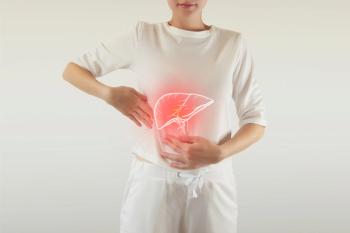
Active postnatal care associated with periviable infant survival rate
In a recent study, the infant survival rate among periviable infants varied based on the type of active postnatal care received at certain gestational ages.
The rate of active postnatal care has a direct association with the survival rate of periviable infants, according to a recent study.
Multiple factors impact the decision on whether periviable infants born at 22 to 25 weeks’ gestation should be given active care, such as individual bias, fear of adverse outcomes, medical ethics, local and national policies, and communication between parents and caregivers. An individualized approach is recommended by professional societies in the United States.
There is little evidence on why infant mortality rates differ based on geographic variation, but data from Sweden has associated lower infant mortality rates among periviable infants in areas with higher rates of active perinatal care. Therefore, regional differences in mortality may be impacted by regional differences in rates of active perinatal care.
Investigators conducted a cohort study to determine the association between active perinatal care and infant mortality for periviable infants. Data on live births and infant deaths was gathered from a US Centers for Disease Control and Prevention database.
Infants were divided into subgroups based on gestational age. Subgroups included 22 weeks’ 23 weeks’ 24 weeks’, and 25 weeks’ gestation. The birth weight of included infants was 400 to 999 g.
Ten United States regions were included in the study. Active postnatal care involved using assisted ventilation, neonatal intensive care unit (NICU), surfactant replacement therapy, antibiotics for suspected neonatal sepsis, or seizures. Aside from seizures, these conditions indicated active postnatal care had been administered.
Race characteristics, insurance status, early prenatal care, and higher-risk pregnancy data were also collected. There were 41,707 periviable infants included in the study, 78% of which were of singleton birth and 46.7% of which were female.
The gestational age of 13.7% of infants was 22 weeks, 23 weeks for 23.1%, 24 weeks for 30.5%, and 25 weeks for 32.7%. About 19% of infants were Hispanic, and about 30% were non-Hispanic black. Established prenatal care by 3 months was seen from 69.5% of mothers, and 15.4% of pregnancies were considered higher risk. Medicaid covered about 42% of births.
There was evidence of active postnatal care in 83.9% of infants, with rates varying by region and gestational age. Infants born at 25 weeks’ gestational age were given active postnatal care more often than those born at 22 weeks’ gestational age, 93.5% and 41.5% receiving care respectively.
Survival through infancy was seen in 62.6% of infants overall, 18.9% born at 22 weeks’ gestational age, 50.8% born at 23 weeks’ gestational age, 70.7% born at 24 weeks' gestational age, and 81.7% at 25 weeks' gestational age. Survival rates differed between various regions.
A moderate positive correlation was found between region rate of active postnatal care and survival rate at 22 weeks’ gestation. Rates of active care did not have a significant effect on survival rate at 23 weeks’, 24 weeks’, or 25 weeks’ gestation. A positive correlation was also found between regional NICU admission and survival rate at 22 weeks’ gestation.
While assisted ventilation immediately after birth also had a positive correlation with survival at 22 weeks’ gestation, a negative correlation was found at 25 weeks’ gestation. Surfactant administration therapy also had a negative correlation with survival at 25 weeks’ gestation. Antibiotics for suspected sepsis had no correlation with survival rate.
For perinatal care, a positive correlation was found between regional cesarean delivery rates and survival at 23 weeks’ gestation, but not 22 weeks’, 24 weeks’, or 25 weeks’ gestation.The correlation between antenatal corticosteroid administration and survival was moderately positive at 22 weeks’ gestation and moderately negative at 24 weeks’ gestation.
Reference
Silva ER, Shukla VV, Tindal R, Carlo WA, Travers CP. Association of active postnatal care with infant survival among periviableinfants in the US. JAMA Netw Open. 2023;6(1):e2250593. doi:10.1001/jamanetworkopen.2022.50593
Newsletter
Access practical, evidence-based guidance to support better care for our youngest patients. Join our email list for the latest clinical updates.














